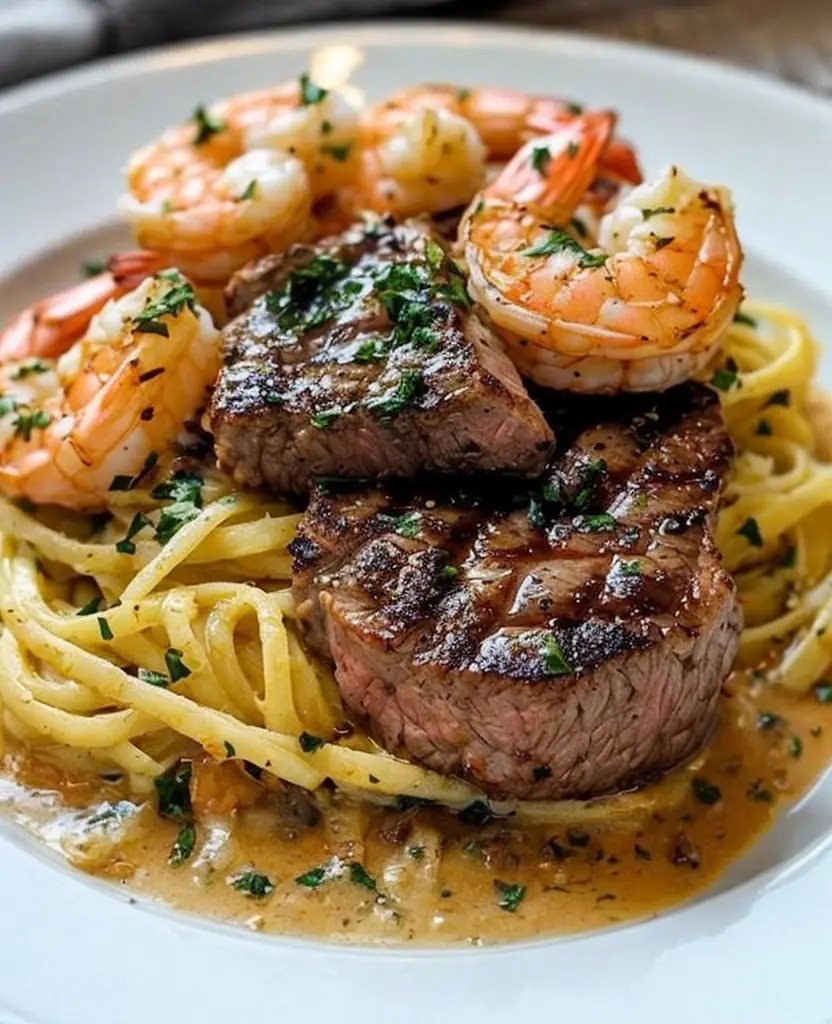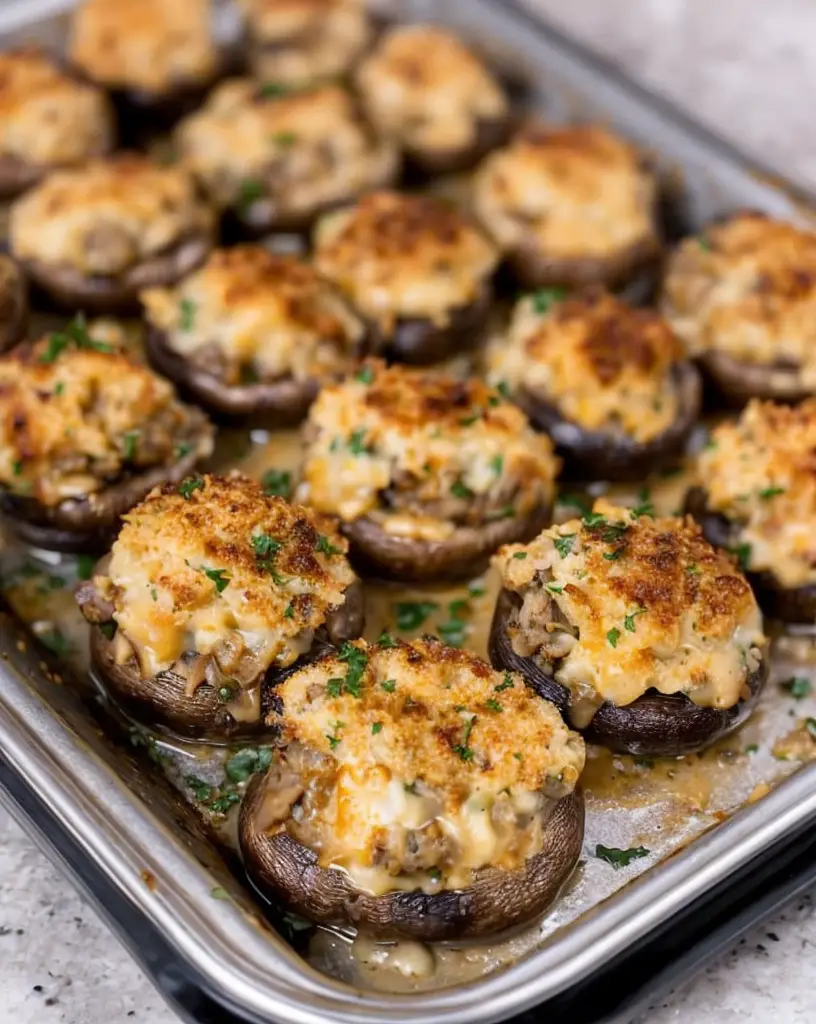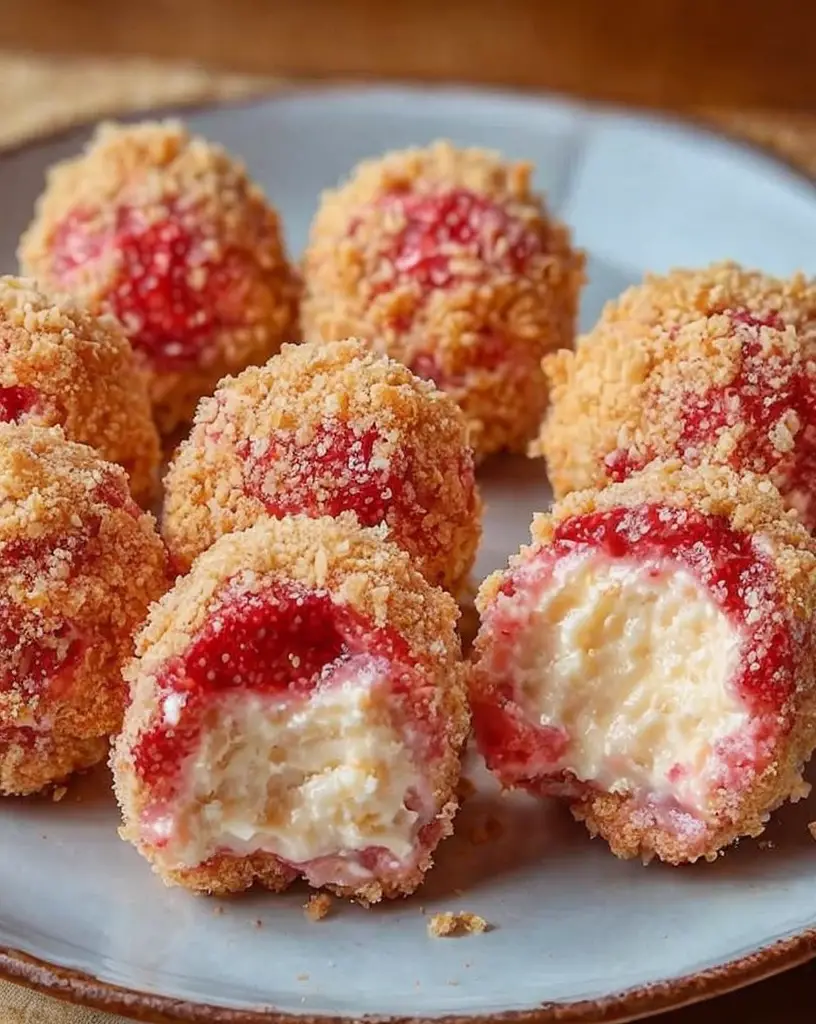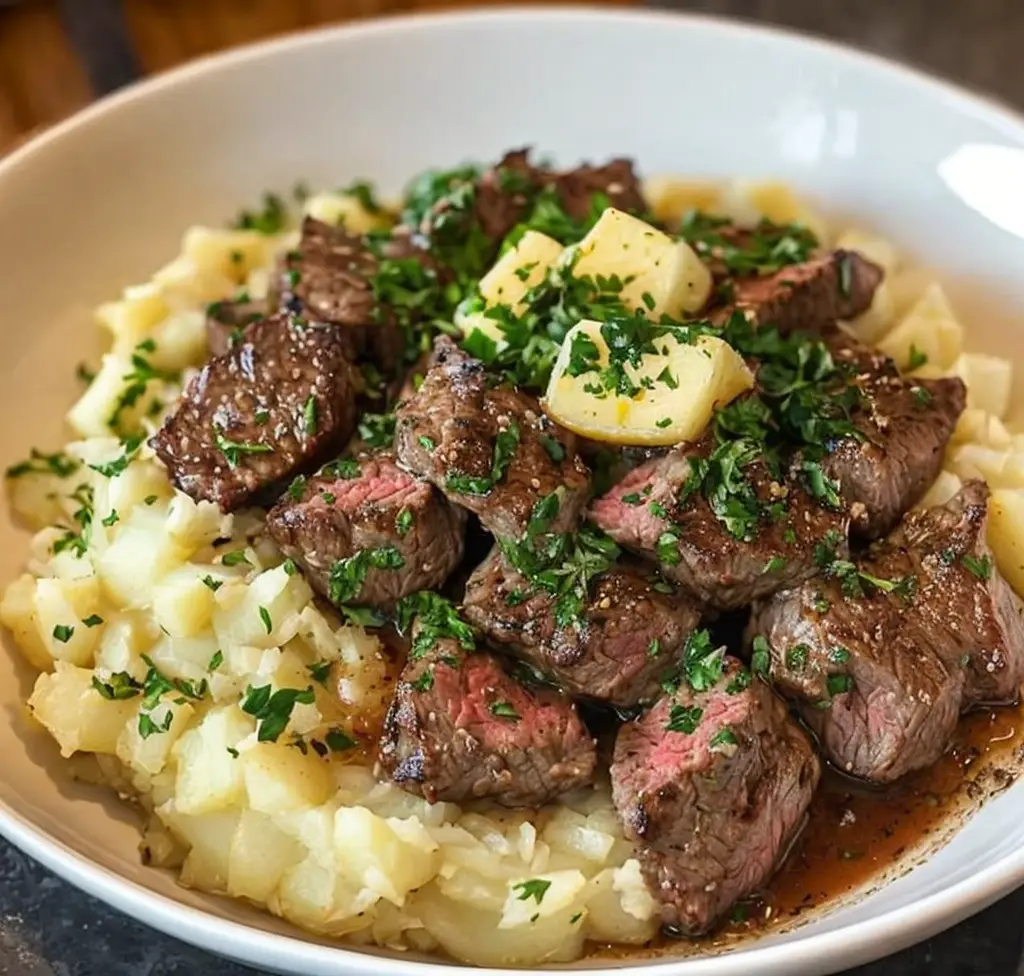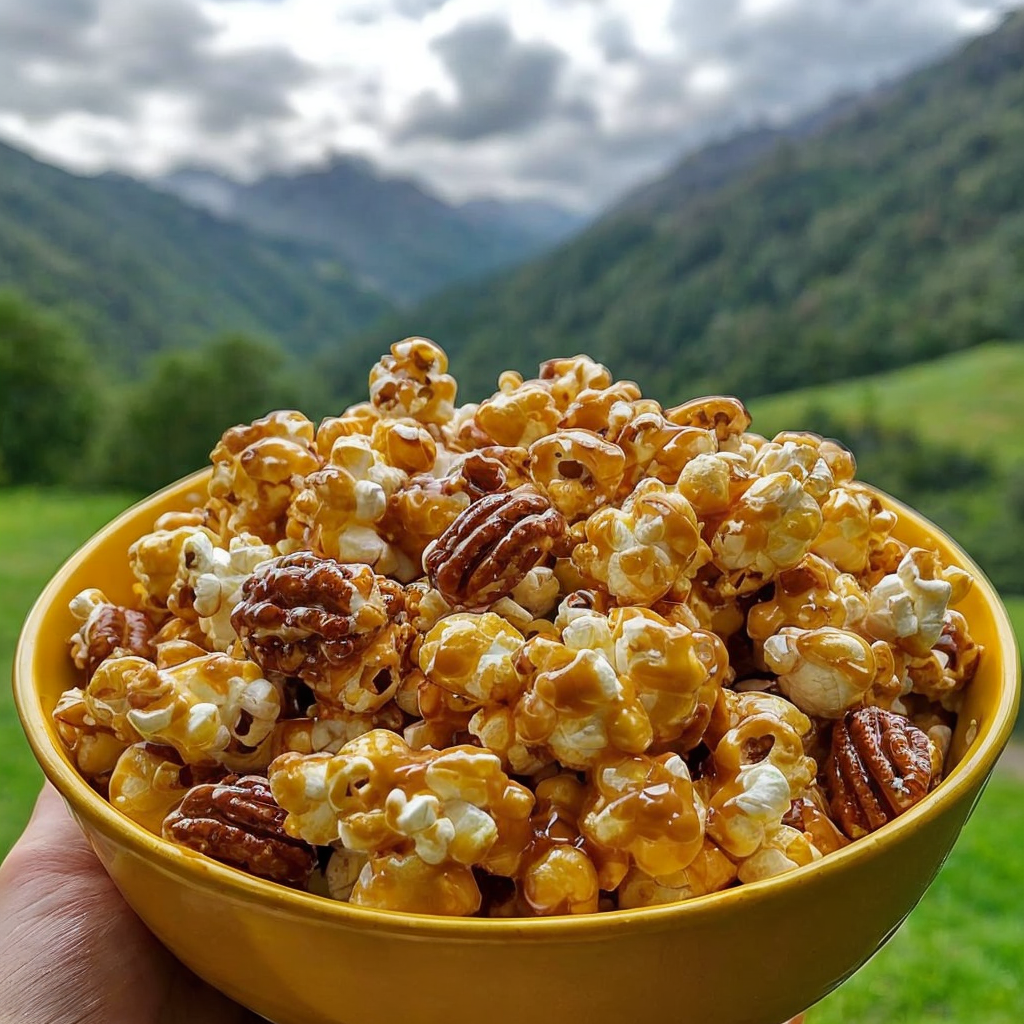Steak and Shrimp Scampi: A Surf and Turf Delight
Steak and Shrimp Scampi is a culinary masterpiece that marries the earthy richness of prime beef with the succulent sweetness of fresh shrimp. This dish combines the best of both land and sea, delivering an experience that’s both luxurious and comforting. Each bite is a journey through deep flavors enhanced by a rich garlic butter sauce that ties the elements together. Whether it’s a special occasion or a desire for an indulgent dinner at home, this dish is sure to please.
The moment the beef hits the hot pan and sizzles alongside the shrimp, an enticing aroma fills the air. The steak develops a crust that’s infused with butter and aromatic herbs, while the shrimp obtain a delicate char, offering layers of complex flavors. As the dish comes together, the harmonious blend of garlic, lemon, and herbs envelops the senses, creating an irresistible aroma that teases the palate.
With its elegant presentation, Steak and Shrimp Scampi is designed to impress. The warm, buttery hues of the dish are complemented by flashes of lemon zest and fresh parsley, creating a dish that’s as appealing visually as it is to taste. A meal fit for a king, this recipe is surprisingly simple in technique yet speaks volumes through its flavor profiles.
Quick Recipe Highlights
- Flavor Profile: Experience a blend of savory steak and sweet shrimp, united by a rich, buttery garlic sauce.
- Texture: Delight in a combination of tender steak and juicy shrimp with a silky, smooth sauce.
- Aroma: Immerse yourself in the delightful scents of lemon, garlic, and herbs wafting from the kitchen.
- Visual Appeal: A feast for the eyes with its golden-brown crusts and vibrant garnish of parsley.
- Skill Level Needed: Best suited for intermediate cooks, comfortable with timing and temperature adjustments.
- Special Equipment: A cast iron skillet and a good set of tongs are recommended for achieving the perfect sear.
Recipe Overview
- Difficulty Level: This dish requires attention to detail and mastery of timing, particularly in managing different cooking stages for steak and shrimp.
- Category: Perfect as a main course for dinner, catering to those looking for a balanced surf and turf meal.
- Cuisine: This dish is grounded in American culinary traditions with Italian influences, particularly in the scampi sauce which uses key ingredients like garlic and lemon.
- Cost: While it includes premium ingredients like steak and shrimp, careful sourcing can keep the dish accessible without compromising quality.
- Season: Best enjoyed year-round, though the fresh, summery flavors shine brightly in warmer months.
- Occasion: Ideal for celebrating special occasions like anniversaries or birthdays, or for elevating a regular weeknight into something extraordinary.
Why You’ll Love This Recipe
The taste of Steak and Shrimp Scampi is a culinary celebration in itself. The juicy cut of steak pairs exquisitely with the subtle sweetness of shrimp, while fragrant garlic butter sauce pulls everything together beautifully. The textures play off each other wonderfully, with the tender steak and plump shrimp contrasting against the rich, velvety sauce. This dish is a delight for the senses—savory, buttery, and slightly tart with hints of herbaceous freshness from parsley.
In terms of convenience, this recipe brings together a gourmet dish with surprisingly simple steps. By focusing on quality ingredients and honing a few key techniques, you can execute this meal in under an hour, making it achievable even on a busy evening. It offers a substantial return on investment in terms of flavor and sophistication while keeping preparation manageable.
Nutritionally, this meal packs in high protein with its steak and shrimp foundation, offering sustaining energy and satiety. It’s naturally low in carbs and adaptable for various dietary preferences without sacrificing its core flavors. If paired with a light salad or steamed vegetables, it provides a balanced plate suitable for a well-rounded, nourishing meal.
For social settings and entertaining, Steak and Shrimp Scampi captures attention as a statement dish. It conveys thoughtfulness and skill, sure to impress guests with its artful fusion of surf and turf. The recipe lends itself to an interactive dining experience where the process and plating can be as much a part of the enjoyment as the food itself.
Cost-effectiveness is another advantage, balancing the use of premium components like steak and shrimp with a strategic approach to shopping and portioning. With a focus on quality over quantity, it’s possible to enjoy a lavish meal without stretching the budget excessively. The simplicity in preparation allows for investing in better ingredients, amplifying the recipe’s luxurious nature.
Historical Background and Cultural Significance
The concept of combining steak with seafood originates from the classic American steakhouse tradition, highlighting the luxury of surf and turf dining. The roots trace back to upscale dining in the mid-20th century when restaurants began offering premium combinations of land and sea delights, symbolizing abundance and culinary opulence.
Culturally, Steak and Shrimp Scampi represent a blend of worlds—American extravagance meets the subtle, flavor-centric Italian way of cooking. It’s a dish that has evolved to cater to a growing appreciation for both steakhouse and Italian culinary techniques, beautifully merging the two into one delectable creation that reflects both traditions.
Traditionally, scampi refers to a method of preparation involving garlic and butter, originating from Italian dishes using scampi crustaceans. The American adaptation has broadened this to include shrimp, aligning with local availability and taste preferences while preserving the original Italian essence.
Regional variations of Steak and Shrimp Scampi may incorporate different herbs, sauces, or marinades, reflecting the diverse culinary landscapes of the U.S. Some prefer a spicy twist with chili flakes, while others might add a touch of white wine for additional complexity. These variations keep the dish dynamic and individually tailored, perfecting it through local tastes and availability.
Ingredient Deep Dive
For the perfect steak, consider cuts like ribeye or filet mignon, known for their tenderness and flavor richness. These cuts boast significant cultural importance in American steakhouses, often heralded for their quality and taste. When choosing steak, prioritize marbling for flavor and select cuts that are vivid in color with a firm texture.
Shrimp, the star of the scampi, brings a touch of the sea’s opulence to this dish. Nutritionally, shrimp is low in calories but high in protein, vitamins, and minerals, making it a valuable component of a balanced diet. Opt for peeled and deveined shrimp to save prep time, ensuring they are firm and fragrant with a slight sea smell, indicating freshness.
Storage of both primary ingredients is crucial. Keep steaks stored in the coldest part of your refrigerator or freeze them if not using within a couple of days. Shrimp, on the other hand, should be used as freshly as possible or kept in the freezer to preserve their natural sweetness until cooking time. Substitutions could include other seafood like scallops or a cut of chicken breast, each offering different but delectable results.
Common Mistakes to Avoid
- Overcooking the steak can lead to toughness; focus on letting it rest and using a meat thermometer to ensure the perfect doneness.
- Avoid overcrowding the pan when cooking shrimp to ensure an even, golden sear rather than steaming.
- Skipping the resting period for steak can cause juices to be lost; ensure the steak rests to retain moisture.
- Failing to properly heat your skillet can prevent achieving a perfect crust, crucial for flavor development.
- Insufficient seasoning of both steak and shrimp can result in a bland outcome; use salt and pepper generously.
- Forgetting to deglaze the pan with lemon juice or white wine can lead to missed flavor complexity from the sauce.
- Overcooking shrimp makes them rubbery; instead, cook until just opaque for tenderness.
- Not using enough garlic or fresh herbs may result in a muted scampi sauce that lacks vibrancy.
- Using unsalted butter could lead to under-seasoned results; if using, adjust seasoning accordingly.
- Neglecting to pat your steak dry before cooking can hinder crust formation needed for maximum flavor.
Essential Techniques
Searing the steak is essential for flavor depth. To master it, ensure your pan is smoking hot before introducing the meat, which enables a browned, flavorful crust. Common pitfalls include a pan that’s too cold or flipping the steak too frequently, both obstructing appropriate caramelization.
In shrimp preparation, achieving a quick sauté is vital. This technique secures tenderness and keeps the shrimp moist. Look for shrimp turning opaque combined with pink hues as visual cues of readiness. Over-sautéing leads to a rubbery texture, which detracts from the eating experience.
Creating the scampi sauce requires balancing richness with acidity. Start by sautéing garlic until fragrant but not browned, then introduce lemon and butter to achieve a velvety emulsion. Resisting the urge to rush this process ensures the sauce’s depth and elegance.
Pro Tips for Perfect Steak and Shrimp Scampi
Select high-quality ingredients to make the difference in your Steak and Shrimp Scampi; grass-fed beef and fresh shrimp provide the best flavor.
Preheat your pan thoroughly before cooking steak to guarantee a perfect crust; a hot pan is crucial for caramelization.
Be sure to deglaze the pan for scampi sauce after cooking the steak; the brown bits in the pan are packed with flavor.
Temper your steak before cooking, allowing it to come to room temperature; this ensures more even cooking and maximum tenderness.
Add fresh herbs at the last moment to preserve their vibrant flavors and colors in the final dish.
For extra lemony flavor, zest your lemon before juicing and add the zest to the sauce for an aromatic boost.
Rest cooked steak on a warm plate, covered lightly to let it relax and reabsorb its juices, resulting in a juicy bite.
If desired, finish your shrimp in the oven for even cooking after the initial pan sear, ensuring complete and gentle heat distribution.
Variations and Adaptations
Regional variations might lean on local herb blends or add heat with chili peppers. The flexibility of the dish invites experimentation with substitutions like scallops instead of shrimp or incorporating seasonal vegetables like asparagus or squash.
During the winter months, add heartiness with an accompaniment of creamy polenta or parmesan risotto. Warmer months could see a fresh salad alongside, highlighting tomatoes and basil in a refreshing contrast with the scampi.
Dietary modifications are readily achievable by using a plant-based butter substitute and swapping out steak for portobello mushrooms, catering to vegan diners while maintaining flavor depth.
Would you like to tweak the flavors? Incorporate saffron threads in the scampi sauce or infuse steaks with rosemary instead of thyme for subtle enhancements.
For presentation alternatives, try serving with roasted cherry tomatoes, adding a vibrant pop of color and a flavor contrast.
If you prefer a different texture, pound the steak thinner or butterfly shrimp for a broader sear surface, altering texture and appearance beneficially.
Serving and Presentation Guide
Consider using wide, shallow dishes for plating, creating space to showcase the stunning crust of the steak and glossy shrimp while reserving room for garnishes.
Garnishing ideas include freshly chopped parsley, a drizzle of high-quality olive oil, or scattered capers for a burst of brine.
Serve with classic steakhouse sides such as a loaded baked potato or garlic mashed potatoes, adding comfort and familiarity.
Modernize the serving with a side of quinoa salad or lightly dressed arugula, incorporating contemporary tastes.
Take temperature into account by keeping steak warm during resting, as well as heating plates slightly before serving for perfection retention.
Control portion sizes judiciously; aim for 6-8 oz of steak and 4-6 shrimp per serving to satisfy without excess.
Wine and Beverage Pairing
Opt for a full-bodied red wine like Cabernet Sauvignon that complements the steak’s richness while balancing garlic’s pungency in the shrimp.
For non-alcoholic alternatives, a lightly sparkling water infused with lemon serves to cleanse the palate without interfering with flavors.
If desired, offer an iced tea with a splash of mint, providing a refreshing accompaniment in warmer climates.
Temperature is essential; serve red wines slightly cooler than room temperature and white wines chilled yet not icy, ensuring aromatic retention.
Suggest serving with a light cheese platter or bread basket as a precursor, setting the mood for culinary indulgence.
Storage and Shelf Life
Refrigerate leftovers in an airtight container within two hours of cooking to maintain freshness and safety, consuming within 2-3 days.
Store at or below 40°F, monitoring for quality preservation and minimizing the risk of bacterial growth.
Consider portioning leftovers prior to refrigerating for easy reheating, using microwave-safe containers or reheating on the stovetop over low heat to retain texture.
Watch for signs of spoilage like off smells or discoloration, disposing promptly to prioritize health.
Freezing may affect steak texture but consider freezing cooked shrimp- separate from steak, observing a three-month safety window when properly sealed and protected from freezer burn.
Make Ahead Strategies
Plan a prep timeline involving chopping herbs and marinating steak hours ahead, allowing you to focus solely on cooking closer to mealtime.
Store components separately when preparing portions ahead, such as garlic butter sauce, preventing cloves from overpowering other flavors and ensuring freshness.
Quality remains high by pre-searing shrimp hours ahead and gently reheating in sauce, saving valuable serving time but preserving taste and texture vitality.
Assembly tips include arranging garnish last minute, keeping herbs fresh until needed without losing vibrancy during sitting time.
Reheat with care, using gentle heat to avoid overcooking, while winding down as guests arrive, for seamless service transitions.
Engage fresh ingredients as finishing touches for liveliness, incorporating lemon zest or parsley on site to capture aroma and visual appeal.
Scaling Instructions
For halving the recipe, adjust ingredient quantities proportionally, applying the same principles of searing and sauce preparation to ensure retained flavor.
Scaling up involves doubling or tripling ingredient volumes but maintaining a single batch at a time for optimal heat distribution and texture preservation.
Equipment adjustments may include using multiple pans to accommodate increased quantities, thereby preventing overcrowding and heat loss.
Timing modifications might be necessary, particularly for longer resting periods, when serving more significant groups or hosting events.
Consider storage readily when expanding quantities, preparing storage containers for leftover components and preventing wastage.
Nutritional Deep Dive
Macros in Steak and Shrimp Scampi include substantial protein, prevalent in both steak and shrimp, fostering growth and repair.
Micronutrients vary, with shrimp supplying valuable iodine, zinc, and B vitamins, contributing to balanced nutritional intake.
Health benefits can include maintaining energy levels, enhancing muscle preservation due to its abundant protein profile, and benefiting from omega-3 in shrimp.
Dietary considerations encompass accommodating high-protein, low-carb needs while keeping saturated fats higher with steaks in mind.
Portion analysis underscores moderation, harmonizing rich flavors with mindful servings to foster satisfaction without excess.
Weight management tips involve pairing scampi with fiber-dense accompaniments, promoting satiety and nutritional balance.
Dietary Adaptations
For gluten-free adaptation, ensure sauces and sides incorporate gluten-free ingredients, checking labels diligently for possible contaminants in butter or seasonings.
To create a dairy-free version, consider olive oil or margarine substitutes, adapting richness while avoiding allergenic compounds in traditional butter.
For vegan enthusiasts, accommodate with tofu or seitan as steak stand-ins, retaining structure and flavor similarly by marinating with umami-rich spices.
Achieve a low-carb approach by embracing zoodles or shirataki noodles in lieu of pasta, offering meal consistency and appeal.
Keto proponents appreciate fatty focus but should monitor portion sizes, balancing high protein with generous salad accompaniments.
Paleo followers find shrimp scampi naturally aligned with necessities, avoiding grains and legumes while opting for natural oils or fats.
Consider a low-FODMAP approach, monitoring garlic quantities and applying infused oils instead for digestible comfort without sacrificing taste.
Troubleshooting Guide
Address texture issues by ensuring steak is cut across the grain, mitigating toughness and facilitating tenderness.
Correct flavor balance concerns with precise seasoning; salt adequately before cooking, adjusting levels gradually for flavor integrity.
Overcome temperature problems by verifying your meat thermometer for accuracy, ensuring steaks rest for temperature equalization post-cooking.
Confront equipment challenges by ensuring uniform pan base coverage, procuring a heavy-duty skillet promoting effective, even heat for optimal searing.
Navigate ingredient substitutions through strategic like-for-like exchanges such as plant-based margarine integrating dairy-free, without impacting the cooking process significantly.
Refine timing concerns by structuring steps in logical sequence, from mise en place to sequential cooking, enabling smooth workflow from preparation to completion.
Recipe Success Stories
Community feedback often highlights the delight in serving Steak and Shrimp Scampi at gatherings, providing an approachable yet impressive dish strengthened by broad appeal.
Variation successes reflected through personalized element inclusion occasionally transform the scampi sauce, integrating with new spices, boosting recipe versatility.
Adaptation stories reveal culinary exploration ingenuity, particularly among plant-based diets, illustrating effective texture and flavor navigation despite deviations.
Reader suggestions frequently advocate for additional zest or personalized spice mixes, echoing evolving culinary landscapes through tailored enhancements.
Photography tips commonly emphasize capturing the steak’s crust and butter gloss under natural light, showcasing dish coloration effectively for appealing presentation.
Frequently Asked Questions
Can I use frozen shrimp for Shrimp Scampi?
Yes, frozen shrimp can be used, though for best results, ensure they are fully thawed and towel-dried before cooking to avoid excess moisture.
How do I choose the best steak for this recipe?
Focus on tender cuts like ribeye or filet mignon with visible marbling, as these aspects enhance flavor and texture upon cooking.
What’s the secret to a perfectly crusted steak?
Begin with a well-dried steak, seasoning generously, and introduce it to a smoking-hot pan, letting it sear without disturbance until the desired crust forms.
Does the sauce require white wine?
While traditional, wine can be omitted in favor of additional lemon juice or stock, replicating similar depth without alcohol.
What can substitute garlic if I’m allergic?
Consider using garlic-infused oils to impart similar flavor without actual cloves, or substitute with mild shallots finely minced.
How do I avoid rubbery shrimp?
Monitor cooking time closely, removing from heat once they turn opaque, preempting overcooking which leads to undesirable texture.
Can I grill the steak instead of pan-searing?
Absolutely, grilling infuses another flavor dimension, adhering to the same doneness methodology but introducing smoky elements.
Why is resting steak important?
Resting steak allows juices to redistribute throughout the meat, ensuring each bite is juicy and tender as intended.
Additional Resources
Explore related recipes focusing on perfect garlic sauce techniques to amplify scampi mastery, using accessible step-by-step guides to broaden your culinary toolkit.
Broaden ingredient information grasp, from seasonal shrimp varieties enhancing flavor palettes to distinguishing surface marbling benefits in steak quality overviews.
Capitalize on knowledge with equipment recommendations, assessing the best cookware for efficient heat distribution and effective culinary outcomes.
Dive into seasonal variations offering insight into using nature-produced components such as seasonal vegetables, reinforcing fresh availability principles fitting within diverse recipes.
Join the Conversation
Engage with the recipe community online, sharing personal experiences and modifications across social media platforms to inspire fellow food enthusiasts.
Practice photography skills to capture the vibrancy of Steak and Shrimp Scampi, experimenting with lighting and angles to enhance dish presentation and subsequent acclaim.
Collaborate on recipe reviews, unpacking various assumptions about difficulty and taste, discovering shared insights, and evolving traditional perceptions.
Promote community recipe variations indicative of cultural preferences, celebrating unique adaptations making significant marks within broader culinary landscapes.
The Recipe
Steak and Shrimp Scampi
Serves: 4
Prep Time: 15 mins
Cook Time: 30 mins
Total Time: 45 mins
Kitchen Equipment Needed
- Cast iron skillet
- Chef’s knife
- Cutting board
- Meat thermometer
- Tongs
Ingredients
- 4 (6-8 oz) steaks, preferably ribeye or filet mignon
- 12 large shrimp, peeled and deveined
- Salt and pepper to taste
- 4 tbsp butter
- 2 cloves garlic, minced
- 1/4 cup fresh lemon juice
- 2 tbsp chopped parsley
- 1 tbsp olive oil
Directions
- Preheat your cast iron skillet over high heat until it’s smoking hot. Season steaks generously with salt and pepper.
- Add olive oil to the pan and place steaks carefully in the skillet. Sear for 3-4 minutes per side for medium-rare, adjusting based on thickness and preference.
- Remove steaks from the skillet and allow to rest on a warm plate, covered loosely with foil.
- Reduce the heat to medium and add butter to the skillet. Once melted, add garlic and sauté until fragrant, about 1 minute.
- Toss shrimp into the skillet, cooking until just opaque, about 2-3 minutes per side. Stir in lemon juice and parsley.
- Return steaks to the skillet to warm through briefly. Spoon sauce over them, ensuring shrimp are well coated.
- Transfer to plates, garnishing with additional parsley before serving.
Recipe Notes
- For a thicker sauce, emulsify butter gradually using reserved steak juices.
- Lemon zest can be added for extra citrus punch.
- Red pepper flakes offer a spicy kick and can enhance the overall flavor.
